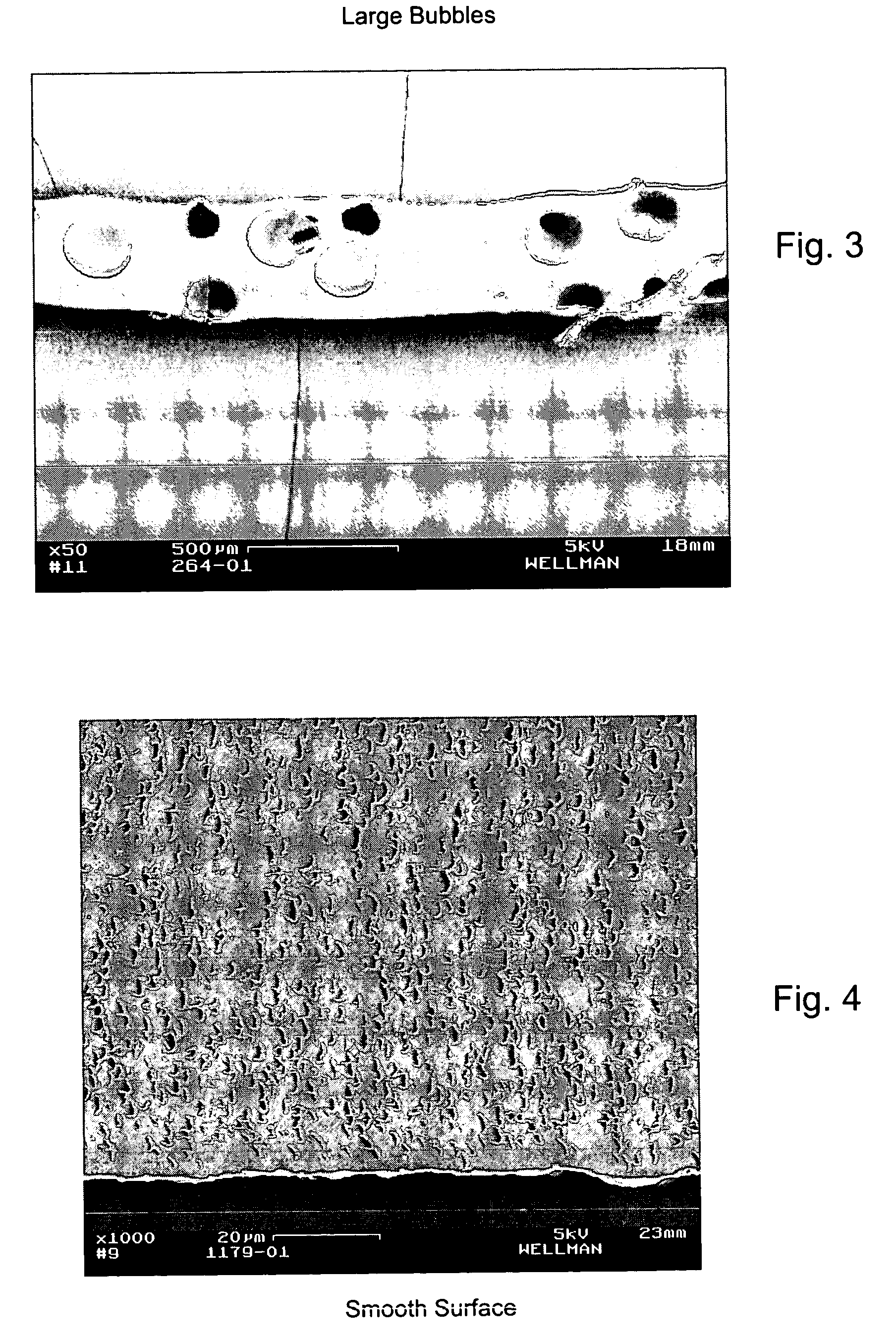Low density light weight filament and fiber
a light weight, low density technology, applied in the field of synthetic filaments and fibers, can solve the problems of reducing reducing the attractiveness or reducing the efficiency of natural fibers, so as to reduce the density of fibers, reduce the density of natural fibers, and increase the elasticity
- Summary
- Abstract
- Description
- Claims
- Application Information
AI Technical Summary
Benefits of technology
Problems solved by technology
Method used
Image
Examples
example
[0118] A copolymer was prepared containing 94% by weight PET and 6% by weight PEG 400, with the addition of 0.08% pentaerythritol to act as a viscosity enhancer, and polymerized to an IV of 0.70. A second PET polymer was prepared which contained a 5 weight % dispersion of PTFE powder (NANOFLON P51A from Shamrock Technologies). Chips of this polymer were combined with the previous copolymer chips in a ratio of 1:9, to generate a polymer blend containing 0.5 wt % PTFE. The blend was dried in a dessicant dryer at 138° C., to a moisture content of 20 ppm.
[0119] The dried chips were melted in a 24:1 extruder of 2.5inch diameter, at 270° C. and forwarded to a fiber spinning pack. At the compression zone of the extruder, a metered stream of liquid fluorocarbon (Genetron 134a, from Honeywell) was injected into the extruder barrel through an inlet port, using a piston pump at a delivery pressure of about 800 psig. The flow rate of the 134a corresponded to an addition rate of 0.5% by weight ...
PUM
| Property | Measurement | Unit |
|---|---|---|
| density | aaaaa | aaaaa |
| density | aaaaa | aaaaa |
| density | aaaaa | aaaaa |
Abstract
Description
Claims
Application Information
 Login to View More
Login to View More - R&D
- Intellectual Property
- Life Sciences
- Materials
- Tech Scout
- Unparalleled Data Quality
- Higher Quality Content
- 60% Fewer Hallucinations
Browse by: Latest US Patents, China's latest patents, Technical Efficacy Thesaurus, Application Domain, Technology Topic, Popular Technical Reports.
© 2025 PatSnap. All rights reserved.Legal|Privacy policy|Modern Slavery Act Transparency Statement|Sitemap|About US| Contact US: help@patsnap.com



